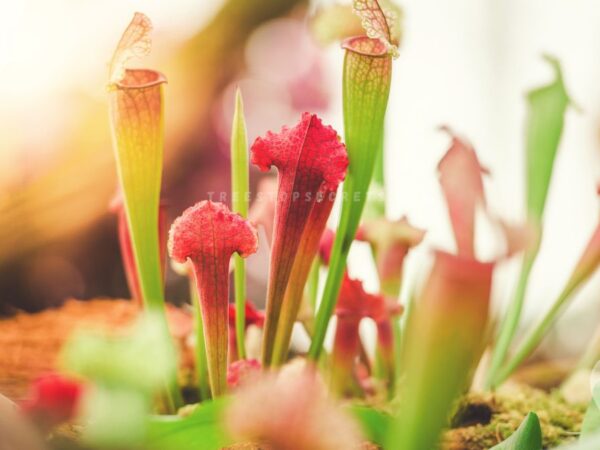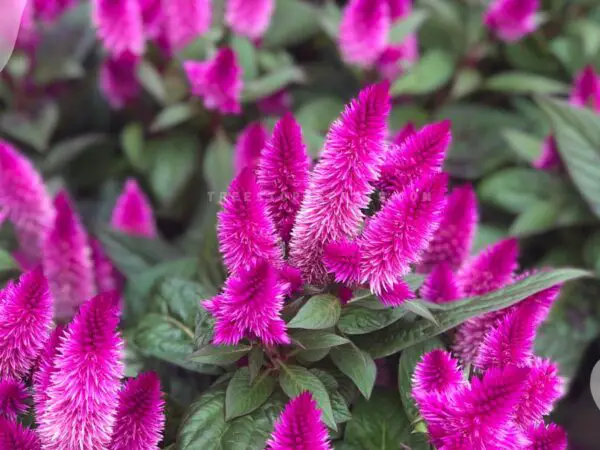Did you know that proper orchid pruning by a plant specialist can boost flower production by up to 70%, resulting in more blooms and new flowers? Mastering this essential skill is the secret to vibrant blooms all year round. Say goodbye to wilted petals and hello to a thriving orchid garden with just a few strategic snips. By understanding the art of orchid pruning, you unlock the potential for healthier plants, more abundant blossoms, and cut stems. Dive into our comprehensive guide to learn the tips and tricks that will transform your orchids' blooms, flowers, stems, and leaves into stunning showpieces.
EOL (
Key Takeaways
-
Pruning Orchids: Understand the importance of pruning orchids to promote healthy growth and encourage blooming of flowers.
-
Before You Start: Prior to pruning, assess your orchid's health and identify areas that require attention for a successful pruning session.
-
Pruning Techniques: Learn and apply proper pruning techniques such as cutting above nodes to stimulate new growth effectively.
-
Aftercare Tips: Provide post-pruning care by ensuring proper watering, light exposure, and fertilization to support your orchid's recovery.
-
Preventing Common Issues: Implement preventive measures like sterilizing tools and monitoring for pests to maintain orchid health post-pruning.
-
Enhancing Bloom Duration: By pruning strategically and providing optimal care, extend the bloom duration of your orchids for prolonged beauty and enjoyment.
Understanding Orchid Pruning
Monopodial vs Sympodial
Monopodial orchids, like Phalaenopsis, grow vertically from a single point, with leaves arranged in a line and stems. They have a main stem that continues to grow upwards and produce blooms. On the other hand, sympodial orchids, such as Oncidiums, have a horizontal growth pattern with rhizomes that spread out and develop new shoots. These orchids often form pseudobulbs and stems where they store water and nutrients.
Benefits of Pruning
Pruning orchids annually is crucial for maintaining plant health by removing dead or decaying parts that can attract pests and diseases. Reducing overgrown areas through pruning also helps improve air circulation around the plant, minimizing the risk of fungal infections. By cutting back old spikes and stems, pruning encourages new growth, leading to more frequent blooming cycles.
Best Time for Pruning
The best time to prune orchids is after they finish flowering, typically during their dormant phase. It is essential to wait until the orchid shows no signs of new spikes before initiating pruning to avoid disrupting potential bloom development. Orchids usually have a long blooming period before entering a rest phase, making this an ideal time for maintenance activities like pruning.
Before You Start
Essential Tools
When pruning orchids, it's crucial to have the right tools on hand. Sharp cutting tools are essential for clean cuts that promote healthy growth. Hand pruners are perfect for trimming stems and leaves accurately.
To ensure the health of your orchids, always sterilize your cutting tools before use. Using isopropyl alcohol is an effective way to prevent the spread of diseases between plants.
-
Hand pruners
-
Isopropyl alcohol
Preparing Your Workspace
Creating a suitable workspace is key when it comes to orchid pruning. A clean and organized area helps you work efficiently without any distractions.
Good lighting is essential for accurately seeing where to make cuts, ensuring you don't harm the plant unintentionally. Proper ventilation in your workspace helps maintain a healthy environment for both you and your plants.
-
Clean and organized workspace
-
Good lighting
-
Proper ventilation
Pruning Techniques
Monopodial Orchids
Flower Spikes
Pruning flower spikes in monopodial orchids involves cutting them back after they have finished blooming. This process stimulates the plant to produce new spikes and flowers. Removing spent flower spikes is crucial as it redirects the plant's energy towards new growth.
-
Trimming flower spikes should be done carefully to avoid damaging the healthy parts of the plant.
-
Prune the spike at a 45-degree angle just above a node to promote healing and prevent infections.
-
Regularly pruning spent flower spikes encourages the orchid to bloom more frequently throughout the year.
Wilted Leaves
When pruning monopodial orchids, removing wilted leaves is essential for maintaining the plant's health and aesthetics. Wilted leaves can attract pests and diseases, affecting the overall well-being of the orchid.
-
Trim wilted leaves close to the stem using sterilized scissors to prevent further damage.
-
Eliminating wilted leaves enhances air circulation around the plant, reducing the risk of fungal infections.
-
Proper disposal of damaged leaves prevents the spread of diseases within the orchid collection.
Aerial Roots
Trimming aerial roots during orchid pruning is necessary to maintain a tidy appearance and prevent overcrowding. Aerial roots play a crucial role in nutrient absorption and anchoring the plant.
-
Carefully trim only yellow or dried-out aerial roots while leaving healthy green ones intact.
-
Avoid cutting too close to the main stem to prevent injuring vital root structures.
-
Trimming aerial roots also promotes better airflow around the plant, reducing humidity-related issues.
Sympodial Orchids
Long Roots
In sympodial orchids, long roots can hinder proper drainage and lead to waterlogged conditions, risking root rot. Trimming long roots is essential for maintaining optimal root health.
-
Cut back excessively long roots using clean shears to prevent water accumulation in the potting medium.
-
Long roots can compete with new root growth, affecting nutrient uptake and overall plant vigor.
-
Trimming long roots should be done during repotting sessions to minimize stress on the orchid.
Removing Damaged Parts
Leaves and Bulbs
When pruning orchids, focus on removing damaged leaves and bulbs to promote healthy growth. Start by inspecting the plant for any discolored or withered leaves. Carefully cut these off using sterilized scissors to prevent the spread of disease. Ensure to make clean cuts close to the base of the plant.
-
Trim damaged leaves
-
Use sterilized scissors
-
Promote healthy growth
Inspect the bulbs for any signs of rot or damage. Remove any affected bulbs promptly to prevent further deterioration. Healthy bulbs are crucial for the orchid's nutrient storage and overall well-being. By trimming damaged parts, you encourage new growth and blooming.
Roots Care
Proper care for an orchid's roots is essential for its health and vitality. When pruning, pay attention to the root system as well. Remove any mushy or blackened roots as they indicate rotting. Trim these roots back to healthy tissue to prevent the spread of infection.
-
Check root system
-
Remove rotten roots
-
Ensure root health
Healthy roots are crucial for nutrient absorption and water uptake in orchids. By maintaining a robust root system, you support the plant's ability to thrive and flourish. Regularly inspecting and caring for the roots will contribute to the overall well-being of your orchid.
Repotting Essentials
When to Repot
Orchids should be repotted every 1-2 years, typically after they have finished flowering. This time frame allows for the plant to establish new roots in fresh growing medium.
Repotting is also necessary if you notice the potting mix breaking down, roots growing out of the pot's drainage holes, or a dense root system that has outgrown its current container.
It's crucial to avoid repotting during the flowering period as it can cause stress to the plant and affect its blooming cycle. Instead, wait until the flowers have withered before initiating the repotting process.
Choosing the Right Pot
When selecting a new pot for your orchid, opt for one that is only slightly larger than its current container. A pot that is too big can lead to overwatering and root rot.
Ensure that the pot has adequate drainage holes to prevent waterlogging, which can be detrimental to orchids. Proper drainage is essential for maintaining healthy roots and preventing fungal diseases.
Consider using a clear plastic pot for better visibility of the roots. This allows you to monitor root growth and health without disturbing the plant unnecessarily.
Remember that orchids prefer snug spaces, so choose a pot that provides enough room for new growth but isn't excessively large. A well-fitted pot promotes healthy root development and overall plant growth.
Aftercare Tips
Watering Schedule
Maintaining a consistent watering schedule is crucial for the health of your orchids. Overwatering can lead to root rot, while underwatering can cause dehydration.
-
Water your orchids when the top inch of the potting mix feels dry, usually every 7-10 days.
-
Ensure proper drainage to prevent waterlogging, which can harm the roots.
-
Consider factors like humidity levels and temperature in determining the frequency of watering.
Rest Periods
Orchids go through rest periods, where they need reduced water and fertilizer to prepare for blooming. Typically, this occurs after flowering.
-
During rest periods, decrease watering but do not let the roots dry out completely.
-
Reduce fertilization to help the plant conserve energy for blooming.
-
Monitor your orchid's growth and adjust care routines accordingly.
Preventing Common Issues
Rotten Leaves
Orchids can suffer from rotten leaves due to overwatering or poor air circulation. This issue often arises when water accumulates in the crown of the plant, leading to rot. To prevent this, ensure that you water your orchid sparingly and avoid getting water on the leaves.
When removing rotten leaves, use sterilized scissors to cut them off at the base where they meet the stem. Be cautious not to damage the healthy parts of the plant while doing so. Proper sanitization of your tools is crucial to prevent the spread of diseases.
To further prevent rotten leaves, consider adjusting your watering schedule based on the specific needs of your orchid species. Some varieties may require more frequent watering, while others prefer drier conditions. Observing your plant's behavior and adjusting accordingly can help maintain healthy foliage.
Diseased Roots
Diseased roots are a common issue that can affect orchids, often caused by overwatering or poor drainage. To check for diseased roots, gently remove your orchid from its pot and inspect the roots for any signs of rot or discoloration. Healthy roots should be firm and white or green, while diseased roots will appear mushy or brown.
When dealing with diseased roots, it's essential to act promptly to prevent further damage to the plant. Trim off any affected roots using sterile scissors and repot your orchid in fresh, well-draining potting mix. Ensure that the new pot has proper drainage holes to prevent waterlogging.
Consider using a fungicide treatment on your orchid after removing diseased roots to prevent fungal infections from spreading. Follow the instructions carefully and monitor your plant closely for any signs of recurring issues. Proper care and attention can help your orchid recover and thrive once again.
Enhancing Bloom Duration
Extending Flowering
To extend the flowering period of your orchids, ensure they receive adequate sunlight for at least six hours daily. This promotes healthy growth and prolonged blooming.
Water your orchids properly by allowing the top inch of the soil to dry before watering again. This prevents root rot and encourages continuous blooming.
Fertilize your orchids with a balanced fertilizer every two weeks during the growing season. This provides essential nutrients for sustained blooming.
Maintain appropriate humidity levels around 50-70% to keep your orchids healthy and blooming longer. This prevents drying out and wilting of flowers.
Consider repotting your orchids every 1-2 years to refresh the growing medium and provide ample space for root growth. This process helps in sustaining bloom duration.
Regularly inspect your orchids for pests and diseases, addressing any issues promptly to prevent them from affecting blooming periods.
Avoid over-fertilizing your orchids as this can lead to salt buildup in the soil, causing damage to roots and hindering bloom duration.
Ensure good air circulation around your orchids by placing them in areas with proper ventilation. This prevents stagnation and promotes continuous blooming.
Summary
You now have a solid understanding of orchid pruning, from the essential techniques to aftercare tips and preventing common issues. By mastering these practices, you can ensure your orchid remains healthy, vibrant, and ready to bloom. Remember to approach pruning with care and precision, always prioritizing the well-being of your plant. With the knowledge gained from this guide, you are equipped to enhance your orchid's bloom duration and overall growth successfully.
Keep practicing the pruning techniques discussed here and incorporating the aftercare tips into your routine. Your efforts will be rewarded with beautiful blooms and a flourishing orchid. Stay attentive to your plant's needs, and you'll enjoy a stunning display of flowers for years to come.
Frequently Asked Questions
How often should I prune my orchid?
Prune your orchid after it has finished blooming, typically once a year. Regular pruning helps maintain the plant's health and encourages new growth.
What tools do I need for orchid pruning?
You will need sharp, sterilized scissors or pruning shears to avoid damaging the plant. Clean cuts reduce the risk of infections and promote faster healing.
Can I prune my orchid if it's not flowering?
Yes, you can still prune your orchid even if it's not flowering. Removing dead or damaged parts stimulates new growth and enhances the overall health of the plant.
Should I repot my orchid after pruning?
It's recommended to repot your orchid every 1-2 years after pruning to refresh the growing medium and provide space for new roots. Use a well-draining potting mix suitable for orchids.
How can I prevent common issues during orchid pruning?
To prevent issues like over-pruning or cutting healthy parts, always inspect your orchid carefully before pruning. Follow proper techniques, such as cutting at a 45-degree angle above a node.
Image Source: Paid image from CANVA




